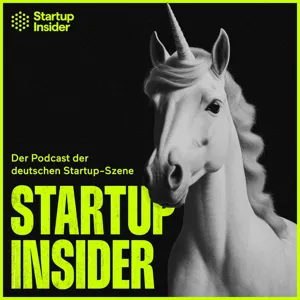Podcast Summary
Understanding Growth as a Systematic Discipline: Growth is a critical and systematic approach to understanding user acquisition, engagement, and retention, involving deep analysis of business dynamics and metrics.
Growth is a systematic discipline for startups that goes beyond just marketing and requires a deep understanding of user acquisition, engagement, and retention. Growth is not a magical or one-size-fits-all process, but rather a rigorous and scientific approach to understanding business dynamics at a micro level. Entrepreneurs often have misconceptions that growth happens on its own or is just a series of growth hacks. However, growth is a critical component for businesses to capitalize on initial traction and retain market share before competition does. In this podcast episode, Andrew Chin and Jeff Jordan, 16z general partners, discuss the key metrics for growth and the nuances of user acquisition, including the role of paid versus unpaid channels and network effects. Stay tuned for part 2 of the series, where they dive deeper into engagement and retention.
Planning for growth decay and intentional expansion: To keep businesses thriving, entrepreneurs must anticipate growth decay and intentionally expand, focusing on new markets and services to maintain performance and improve potential
While businesses may experience impressive growth in the initial stages, it is essential for entrepreneurs to anticipate and plan for growth decay over time. The law of large numbers eventually causes growth rates to slow down, and entrepreneurs must look for new layers of growth to keep their businesses thriving. This intentional growth strategy was exemplified by eBay's expansion from an auction business in the US to international markets and payment integration, which accelerated the company's overall growth. Entrepreneurs should also be aware of the importance of understanding the specific metrics driving growth, such as monthly active users (MAUs) and gross merchandise value (GMV), to maintain a clear picture of their business's performance and potential areas for improvement.
Understanding customer acquisition complexities: Successful businesses rely on a mix of paid and organic acquisition, continually evaluate and optimize strategies, focus on LTV to CAC ratio, and explore alternative sources of growth.
As businesses grow, understanding customer acquisition becomes increasingly complex. The cost to acquire new customers, whether paid or organic, can change significantly. The law of large numbers suggests that there's a finite number of potential customers in a given demographic, and once a business surpasses a certain point, customer behavior can shift. Metrics like customer acquisition cost (CAC) and blended CAC can help businesses understand their acquisition strategies, but it's important to remember that the economics of paid acquisition can degrade over time. The most successful businesses often rely on a mix of paid and organic acquisition, and it's essential to continually evaluate and optimize these strategies. For instance, Amazon's key marketing strategy is now free shipping, and not all businesses need to spend heavily on paid acquisition. Ultimately, focusing on a strong LTV (customer lifetime value) to CAC ratio and exploring alternative sources of acquisition, such as viral growth or partnerships, can help businesses scale effectively while maintaining profitability.
Assessing Profitability of Customer Acquisition: Understanding LTV:CAC ratio helps businesses determine if they're acquiring customers at a cost lower than their future value, optimizing strategies and making informed decisions.
Understanding the LTV (Lifetime Value) to CAC (Cost of Acquired Customer) ratio is crucial for any business looking to assess the profitability of acquiring new customers. LTV represents the value a customer brings to a company over their entire relationship, while CAC is the cost to acquire that customer. To calculate LTV, businesses should consider the incremental profit contribution of each user over their projected lifetime. A healthy LTV:CAC ratio indicates that a company is acquiring customers at a cost lower than their future value to the business. However, it's important to note that this ratio can change as a business scales, with CAC tending to increase and LTV decreasing over time due to the acquisition of less valuable users. Additionally, businesses with multiple revenue streams or different customer acquisition methods should be cautious of blended CAC figures, as they can provide misleading information about the profitability of specific customer segments. Ultimately, a clear understanding of LTV and CAC is essential for making informed business decisions and optimizing customer acquisition strategies.
Leveraging network effects and strategic partnerships for organic growth: Focus on creating a valuable network where each new addition attracts more users to overcome the chicken-and-egg problem and achieve virality. Identify key placements and partnerships to seed the network effect.
While Blended Customer Acquisition Cost (CAC) can provide valuable insights into the cost of acquiring new customers, it's essential to consider the unique organic growth strategies that can scale a business without relying heavily on paid marketing. OpenTable, for instance, grew exponentially without spending money on consumer acquisition by leveraging network effects and strategic partnerships. By focusing on creating a valuable network where each new addition attracts more users, entrepreneurs can overcome the chicken-and-egg problem and achieve virality. To initiate such growth, it's crucial to identify key placements and partnerships that can seed the network effect. For example, OpenTable's presence in restaurants' websites was the catalyst for its network effect. Ultimately, the larger the network, the more opportunities for growth, making it a mutually reinforcing cycle.
Leveraging Organic Growth for User Acquisition: Organic growth is effective for acquiring users but relying solely on it can be risky. A diversified strategy that includes paid marketing is recommended for long-term success.
Organic growth can be an effective and cost-efficient way to acquire users, especially when physical cues in the real world or virality within workplaces create a natural interest and spread. Lime Scooters and Slack are examples of companies that have successfully leveraged this strategy. However, relying solely on organic growth can be risky as acquisition costs may increase over time and leave businesses vulnerable to competition. Paid marketing can be a useful tactic when used in conjunction with other channels to accelerate growth or enter new markets, but it should not be the sole engine for user acquisition. The long-term success of a business depends on having a diversified strategy and a plan for a world where all channels may not perform optimally.
Maintaining a balance between paid and organic marketing: Be disciplined about costs, avoid excessive reliance on paid marketing, and focus on unique growth hacks to balance your marketing strategy.
When it comes to relying on paid marketing channels for business growth, it's crucial to be disciplined about costs and ensure that the customer acquisition cost (CAC) does not exceed the lifetime value (LTV) of the customer. Additionally, it's important to ensure that paid marketing does not make up a disproportionate percentage of your overall marketing strategy. Relying too heavily on paid marketing can lead to risks such as platform risk, where the cost of the channel increases significantly, and competition driving up costs. Furthermore, some industries, such as ecommerce and meal kit delivery, may struggle to be profitable if they are overly reliant on paid marketing. Instead, it's recommended to focus on unique growth hacks and balancing paid and organic marketing efforts. In summary, while paid marketing can be an effective tool for business growth, it's essential to approach it with a strategic mindset and be aware of the potential risks involved.
Adapting to the latest trends for business growth: Stay competitive by incorporating recording, publishing, and community features, and adapting to visual trends like esports and Instagrammable businesses.
In today's digital age, it's essential for businesses and products to adapt to the latest trends and platforms to thrive. For instance, visual products and experiences, such as esports and Instagrammable brick-and-mortar businesses, have seen significant growth due to their inherent shareability. To remain competitive, it's crucial to build in recording and publishing features, tournaments systems, and community features. The physical world can also adapt to the digital, and vice versa, to create unique and engaging experiences. Startups, in particular, need to focus on growth and acquisition in the early days, but as users start to show up and engage, it's essential to consider how to keep them active. By staying creative and on the cutting edge of trends, businesses can find innovative ways to fit into the current trend and potentially gain a competitive advantage.






